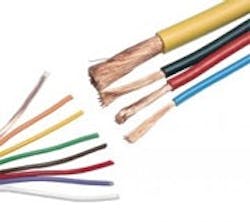Totally Terminal, Man
The "termination" of a wire—really the continuation of a circuit—is among the simplest, but extraordinarily critical, components in our control systems. How many vexing hours have been burnt, often by high-priced help, by issues ultimately traced to a loose wire? When even a rudimentary factory has thousands of field and OEM-landed conductors, it's remarkable we don't suffer more from termination defects. Choices, compromises, and errors from the specification and construction phase of a project might go unnoticed for years before they create issues for the plant dwellers who have to fix them.
My electrical foreman always seems to be testing my resolve by using a butt splice when a conductor breaks. I suppose he feels obliged to offer the cheap and quick alternative to pulling in all new cable or, at a minimum, adding a junction box. One of the reasons butt splices are taboo in plants is their tendency to become troubleshooting nightmares in the future.
If you're shameless enough to document it on a markup, maybe your unfortunate successors will stand a chance of finding the ubiquitous conduit fitting it's tucked away in. Unfortunately, these are repairs done in haste or even in secret. When the plant is waiting on you to get the wiring back together after an outage, it's hard to tell the boss he has to wait another shift while you round up and pull in some new cable. A junction box—even if it's a GUA or similar fitting—is the standard compromise. Be sure to update the drawing.
The complex where my plant operates is populated by users who favor the traditional rising-clamp screw terminal. Available in an enormous variety of sizes, combinations, ratings, colors and capabilities, most projects specify them without a second thought. Although loose wires are not unknown, these terminations seem to hold up well. After years, a random tug-test seldom reveals a loose wire. Some installers advise a cursory retightening of screw terminals after a year, or even on an ongoing (e.g., every two years) basis. Over-tightening can be as bad as under-tightening, and companies are known to specify that torque screwdrivers be used to ensure the proper tightening is applied to each field-installed termination. Screw terminal users can check their manufacturer's specifications to learn the recommended torque for a specific terminal. Some routine or random inspection/quality control of terminations is wise, especially OEM assemblies that have been on a long, bumpy ride to the site.
Higher-vibration environments increase the possibility that screw terminals will loosen over time, and there's a significant contingent of OEMs, integrators, installers and end users who have found happiness with the spring-clamp terminal. Instead of a screw clamp, the wire is locked in place by a relatively strong little spring. The principle is the same as the shepherd's-hook-shaped connections you might have used back in the day for your old model railroad. I've had a few OEM devices that used spring clamps for customer wiring, and loose wires were never an issue—they are in there and they're not coming out. Sometimes a specialized tool is supplied to release a wire, or open the clamp for a wire to be inserted. Others can be opened with the same screwdriver blade you use for traditional blocks. You might need to be more cautious when specifying spring clamps, because the range of wire gauges that can be reliably landed is typically narrower than what's accommodated by screw clamps. It's also more challenging to land multiple wires under the same terminal. Some installers like using ferrules with screw clamps, but I like the secure feeling of all the strands trapped by the spring.
Radicals have been exploring the insulation displacement connection (IDC) terminal for a number of years. Some swear by them and others swear at them. The more sophisticated (and expensive) offerings have improved security and longevity, and have proven themselves in hazardous and corrosive environments such as in sulfur plants. The beauty of the IDC is that no wire stripping is needed. But multiple wires in a terminal are verboten and the connection can be made and unmade only a limited number of times. Because each terminal contains an engineered mechanism to ensure a secure connection, they are bulkier and take up more room in your panels.
Best advice I've seen is to get samples from a number of suppliers and styles, and try them out. And make sure your installers like them. The savings promised by the latest innovations will likely be lost if your craftspeople aren't on board.


